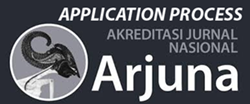Intellectual developmental disorder with hypertelorism and distinctive facies (IDDHDF) A case study with literature review
DOI:
https://doi.org/10.59653/jhsmt.v2i02.666Keywords:
Neurodevelopment deviations, Distinctive facial feature, CCNK gene mutationAbstract
The research aims to investigate the clinical manifestations of neurodevelopmental problems in children with different facies and CCNK gene mutant characteristics. A literature study was carried out to identify the role of CCNK mutations in IDDHDF. Chinese and international search engines like PubMed, MEDLINE, Wanfang Data Knowledge, and Google Scholar were used to search. The search phrases "CCNK", "intellectual developmental disorder", "hypertelorism", and "distinctive facies" were used. A total of 5 studies were found, 11 cases were presented, 3 were thoroughly discussed, and 1 case was presented in this study. The clinical signs and genetic characteristics of children with intellectual developmental disorders with hypertelorism and unique facies were summarized. A male child was 1 year 4 months old. Last 1 year, he appeared of motor and cognitive lag, unable to crawl or stand. He had a large forehead head, wide eye spacing, and cognitive deficiencies, and he was clinically diagnosed with global developmental delay. C.437(exon5) T>C was not found in any of the child's parents and represents a de novo mutation. The main clinical signs were impairments in intellectual development, wide eye spacing, and facial feature features. The findings of the studies discussed here imply that mutations in the CCNK gene may cause IDDHDF. This is a very new kind of study in China to uncover the clinical aspects of a case of Intellectual developmental disorder with hypertelorism and distinctive facies (IDDF). It's discovered that wild-type mRNA coding CCNK partially repaired early defects but not the mRNA with the identified likely pathogenic variation c.331A>G. This shows that CCNK variations are involved in IDDF. The researchers also discovered that the likely pathogenic mutation c.331A>G may induce IDDF via a haploinsufficiency mechanism.
Downloads
References
Araki, S., Ohori, M., & Yugami, M. (2023). Targeting pre-mRNA splicing in cancers: roles, inhibitors, and therapeutic opportunities. In Frontiers in Oncology (Vol. 13). https://doi.org/10.3389/fonc.2023.1152087
Coppine, J., Kaczmarczyk, A., Petit, K., Brochier, T., Jenal, U., & Hallez, R. (2020). Regulation of bacterial cell cycle progression by redundant phosphatases. Journal of Bacteriology, 202(17). https://doi.org/10.1128/JB.00345-20
Dai, W., Wang, H., Zhan, Y., Li, N., Li, F., Wang, J., Yan, H., Zhang, Y., Wang, J., Wu, L., Liu, H., Fan, Y., Tao, Y., Mo, X., Yang, J. J., Sun, K., Chen, G., & Yu, Y. (2023). CCNK Gene Deficiency Influences Neural Progenitor Cells Via Wnt5a Signaling in CCNK-Related Syndrome. Annals of Neurology, 94(6). https://doi.org/10.1002/ana.26766
Elmasry, G. F. (2023). Cyclin-dependent kinase 2 (CDK2). In Metalloenzymes: From Bench to Bedside. https://doi.org/10.1016/B978-0-12-823974-2.00030-9
Fan, J., Rosenfeld, D., Zhang, Y., Giangrande, S. E., Li, Z., Machado, L. A. T., Martin, S. T., Yang, Y., Wang, J., Artaxo, P., Barbosa, H. M. J., Braga, R. C., Comstock, J. M., Feng, Z., Gao, W., Gomes, H. B., Mei, F., Pöhlker, C., Pöhlker, M. L., … De Souza, R. A. F. (2018). Substantial convection and precipitation enhancements by ultrafine aerosol particles. Science, 359(6374). https://doi.org/10.1126/science.aan8461
Fan, Y., Yin, W., Hu, B., Kline, A. D., Zhang, V. W., Liang, D., Sun, Y., Wang, L., Tang, S., Powis, Z., Li, L., Yan, H., Shi, Z., Yang, X., Chen, Y., Wang, J., Jiang, Y., Tan, H., Gu, X., … Yu, Y. (2018). De Novo Mutations of CCNK Cause a Syndromic Neurodevelopmental Disorder with Distinctive Facial Dysmorphism. American Journal of Human Genetics, 103(3). https://doi.org/10.1016/j.ajhg.2018.07.019
Insco, M. L., Abraham, B. J., Dubbury, S. J., Kaltheuner, I. H., Dust, S., Wu, C., Chen, K. Y., Liu, D., Bellaousov, S., Cox, A. M., Martin, B. J. E., Zhang, T., Ludwig, C. G., Fabo, T., Modhurima, R., Esgdaille, D. E., Henriques, T., Brown, K. M., Chanock, S. J., … Zon, L. I. (2023). Oncogenic CDK13 mutations impede nuclear RNA surveillance. Science, 380(6642). https://doi.org/10.1126/science.abn7625
Maity, T. K., Kim, E. Y., Cultraro, C. M., Venugopalan, A., Khare, L., Poddutoori, R., Marappan, S., Syed, S. D., Telford, W. G., Samajdar, S., Ramachandra, M., & Guha, U. (2023). Novel CDK12/13 Inhibitors AU-15506 and AU-16770 Are Potent Anti-Cancer Agents in EGFR Mutant Lung Adenocarcinoma with and without Osimertinib Resistance. Cancers, 15(8). https://doi.org/10.3390/cancers15082263
Malumbres, M. (2014). Cyclin-dependent kinases. Genome Biology, 15(6). https://doi.org/10.1186/gb4184
Ruiz-Reig, N., Hakanen, J., & Tissir, F. (2024). Connecting neurodevelopment to neurodegeneration: A spotlight on the role of kinesin superfamily protein 2A (KIF2A). In Neural Regeneration Research (Vol. 19, Issue 2). https://doi.org/10.4103/1673-5374.375298
Sabariego-Navarro, M., Fernández-Blanco, Á., Sierra, C., & Dierssen, M. (2022). Neurodevelopmental disorders: 2022 update. In Free Neuropathology (Vol. 3). https://doi.org/10.17879/freeneuropathology-2022-3801
Wang, H., Fan, Z., Shliaha, P. V., Miele, M., Hendrickson, R. C., Jiang, X., & Helin, K. (2023). H3K4me3 regulates RNA polymerase II promoter-proximal pause-release. Nature, 615(7951). https://doi.org/10.1038/s41586-023-05780-8
Yu, Z., Teng, Y., Yang, J., & Yang, L. (2024). The role of exosomes in adult neurogenesis: Implications for neurodegenerative diseases. In Neural Regeneration Research (Vol. 19, Issue 2). https://doi.org/10.4103/1673-5374.379036
Zamora‐moratalla, A., de Lagrán, M. M., & Dierssen, M. (2021). Neurodevelopmental disorders: 2021 update. In Free Neuropathology (Vol. 2). https://doi.org/10.17879/freeneuropathology-2021-3268
Downloads
Published
How to Cite
Issue
Section
License
Copyright (c) 2024 Kimseang Nget, Zhu Min

This work is licensed under a Creative Commons Attribution-ShareAlike 4.0 International License.
Authors who publish with this journal agree to the following terms:
- Authors retain copyright and grant the journal right of first publication with the work simultaneously licensed under a Creative Commons Attribution-ShareAlike that allows others to share the work with an acknowledgement of the work's authorship and initial publication in this journal.
- Authors are able to enter into separate, additional contractual arrangements for the non-exclusive distribution of the journal's published version of the work (e.g., post it to an institutional repository or publish it in a book), with an acknowledgement of its initial publication in this journal.
- Authors are permitted and encouraged to post their work online (e.g., in institutional repositories or on their website) prior to and during the submission process, as it can lead to productive exchanges, as well as earlier and greater citation of published work (See The Effect of Open Access).
























